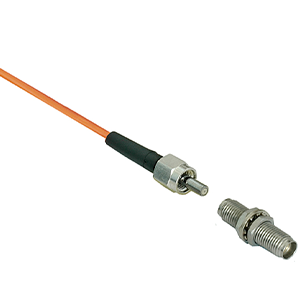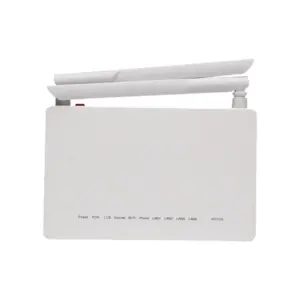The length of Ethernet cables undoubtedly plays an important role in Ethernet networks. This article will explore the maximum transmission distance of Ethernet cables. We will first introduce the common Ethernet cable types and their technical specifications, and analyze the differences in transmission distances between different standard cables. Next, we will explain whether 1000 feet (about 305 meters) meets the Ethernet standard and analyze the key factors that affect the transmission distance of Ethernet cables.
We will list the actual test results of common Ethernet cables at 1000 feet transmission and compare the transmission performance of different cable types at this distance. In addition, we will explore the typical application environments that require 1000 feet of Ethernet transmission and analyze the considerations for selecting the appropriate cable type in these scenarios. Finally, we will introduce technical solutions to increase the transmission distance of Ethernet cables and explain the necessity of using repeaters/amplifiers in 1000 feet transmission.
Overview of Ethernet Cable Technical Standards
Let me give you an overview of common Ethernet cable technical standards and their characteristics.
Common Ethernet cable types and their technical specifications:
(1) Cat5e cable (Category 5e cable)
- Transmission rate can reach 1000Mbps (Gigabit Ethernet)
- Bandwidth can reach up to 100MHz
- Maximum transmission distance is 100 meters
(2) Cat6 cable (Category 6 cable)
- Transmission rate can reach 1000Mbps
- Bandwidth can reach up to 250MHz
- Maximum transmission distance is 100 meters
(3) Cat6a cable (Category 6 enhanced cable)
- Transmission rate can reach 10Gbps (10 Gigabit Ethernet)
- Bandwidth up to 500MHz
- Maximum transmission distance is 100 meters
(4) Cat7 cable (Category 7 cable)
- Transmission rate up to 10Gbps
- Bandwidth up to 600MHz
- Maximum transmission distance is 100 meters
(5) Cat8 cable (Category 8 cable)
- Transmission rate up to 40/100Gbps
- Bandwidth up to 2GHz
- Maximum transmission distance is 30 meters
With the continuous advancement of Ethernet technology, cable specifications are also constantly upgraded to support higher transmission rates and bandwidths.
Differences in transmission distance between different standard Ethernet cables:
(1) Cat5e cable
- Maximum transmission distance is 100 meters
- Suitable for general application scenarios of Gigabit Ethernet
(2) Cat6 cable
- Maximum transmission distance is 100 meters
- Performance is slightly better than Cat5e, and can meet most Gigabit Ethernet applications
(3) Cat6a cable
- Maximum transmission distance is 100 meters
- Supports 10GbE applications and can provide higher bandwidth and speed
(4) Cat7 cable
- The maximum transmission distance is 100 meters
- The performance is better than Cat6a, suitable for 10GbE high-speed network applications
(5) Cat8 cable
- The maximum transmission distance is 30 meters
- Although the transmission distance is short, it can support 40/100GbE ultra-high-speed Ethernet
It can be seen that with the upgrade of cable standards, the maximum transmission distance is basically maintained at around 100 meters, but the supported rate and bandwidth have been greatly improved. Although the transmission distance of Cat8 cable is short, it can meet the needs of ultra-high-speed Ethernet applications such as data centers. This technical compromise is conducive to network design and wiring management.
The feasibility of Ethernet cable transmission at a distance of 1000 feet
Let me analyze the feasibility of Ethernet cable transmission at a distance of 1000 feet (about 305 meters).
Does 1000 feet meet Ethernet standards:
From the perspective of Ethernet technical standards, a transmission distance of 1000 feet (about 305 meters) does not meet the requirements:
(1) Cat5e/Cat6/Cat6a cables
- The maximum transmission distance of these common Ethernet cable standards is 100 meters (about 328 feet).
- Transmission distances exceeding 100 meters have exceeded the technical specifications of these cables.
(2) Cat7/Cat8 cables
- Although the performance is better, the maximum distance of Cat7 cables is also 100 meters, and the maximum distance of Cat8 cables is 30 meters.
- The transmission distance of 305 meters far exceeds the technical specifications of these cables.
Generally speaking, a transmission distance of 305 meters has exceeded the scope of the current mainstream Ethernet cable technical standards. It is very difficult to ensure the reliability and performance indicators of Ethernet communication at such a long distance.
Key factors affecting the transmission distance of Ethernet cables:
The transmission distance of Ethernet cables is affected by many factors, mainly including:
(1) Cable characteristics
- The conductor material, insulation performance, shielding structure, etc. of the cable will affect the transmission quality.
- High-quality cables can maintain good transmission performance over longer distances.
(2) Installation conditions
- Installation details such as the cable bending radius and joint processing will affect the transmission characteristics.
- Professional installation technology is critical to extending the transmission distance.
(3) Environmental factors
- Environmental conditions such as temperature, humidity, and electromagnetic interference will affect cable performance.
- Harsh environments will increase signal loss and limit transmission distance.
(4) Equipment performance
- The hardware performance of network equipment will also affect the overall transmission quality and distance.
- If the equipment performance is poor, it will also limit the maximum transmission range of the cable.
In summary, to achieve reliable Ethernet transmission within a distance of 305 meters, it is necessary to meet multiple requirements such as the cable itself, installation conditions, environmental factors, and equipment performance at the same time, which is difficult in actual applications.
Performance of different Ethernet cables at 1000 feet transmission
Let me introduce you to the actual performance of common Ethernet cables at a transmission distance of 1000 feet (about 305 meters).
Measurement results of Ethernet cables at 1000 feet transmission:
(1) Cat5e cable
- At a distance of 1000 feet, the transmission performance of Cat5e cable is significantly reduced.
- It may not support Gigabit Ethernet in actual measurement, and the maximum rate may be only about 100Mbps.
- Signal distortion and noise are serious, and it is difficult to ensure the reliability of data transmission.
(2) Cat6 cable
- Cat6 cable performs slightly better than Cat5e at a distance of 1000 feet.
- Supports Gigabit Ethernet, but the transmission rate will be reduced.
- Signal quality and noise level have also improved, but still do not meet the standard requirements.
(3) Cat6a cable
- Cat6a cable performs relatively well in 1000-foot transmission.
- Can maintain a transmission rate of 10Gbps, but there may be some data loss.
- The signal quality is relatively better, but it cannot fully meet the 10GbE technical standard.
(4) Cat7/Cat8 cable
- These high-performance cables perform even better in 1000-foot transmission.
- Can approach or even reach the performance indicators of its maximum transmission distance.
- But even so, it still cannot fully exert its performance advantages at a distance of 305 meters.
In general, the performance of Ethernet cables will drop significantly at a transmission distance of 1000 feet (about 305 meters), making it difficult to meet the needs of actual applications. Even the best-performing Cat7/Cat8 cables have certain limitations.
Performance comparison of different cable types at 1000 feet:
(1) Transmission rate
- Cat5e can only reach a maximum of about 100Mbps
- Cat6 can maintain Gigabit Ethernet
- Cat6a can support 10Gbps, but there will be some data loss
- Cat7/Cat8 can approach their respective maximum rates
(2) Signal quality
- Cat5e signal distortion and noise are serious
- Cat6 signal quality is relatively better
- Cat6a signal quality is better, but still does not meet the standard
- Cat7/Cat8 signal quality is the best, but it cannot fully meet the requirements
(3) Reliability
- Cat5e cannot guarantee the reliability of data transmission
- Cat6 has improved in reliability
- Cat6a has better reliability, but is not very stable
- Cat7/Cat8 has the highest reliability, but still has certain limitations
In summary, even the best performing Cat7/Cat8 cables cannot fully exert their advantages at a transmission distance of 1000 feet (305 meters), and the performance will be compromised. For general Ethernet applications, this long-distance transmission has great limitations.
Application scenarios for 1000-foot Ethernet transmission
Let me analyze the typical application scenarios that require 1000-foot Ethernet transmission, and the key factors for choosing the right cable type in these scenarios.
Typical application scenarios that require 1000-foot Ethernet transmission:
(1) Factory Automation
- Factory workshops are usually large in area and equipment is dispersed.
- Network interconnection between devices is required within a distance of more than 1000 feet.
(2) Building Automation
- Network wiring in large commercial buildings or office buildings needs to cover longer distances.
- Ethernet transmission distance between different floors or buildings may exceed 1000 feet.
(3) Port/Airport System
- The monitoring, dispatching and other systems of ports and airports are distributed over a wide area.
- It is necessary to interconnect the nodes of each system within a distance of more than 1000 feet.
(4) Agricultural Internet of Things
- Sensor equipment in farms or agricultural parks is relatively scattered.
- Long-distance data collection and transmission is required via Ethernet.
(5) Mining/Oilfield Facilities
- Mining and oilfield facilities are usually located in remote areas and are large in size.
- Ethernet is required to connect various operating points within a distance of more than 1,000 feet.
In general, these application scenarios require Ethernet interconnection between devices over a large range, and a transmission distance of 1,000 feet is a common requirement.
Summary
It is crucial to choose the right cable type for 1,000-foot Ethernet transmission. Our company has long been focusing on the research and development and production of network equipment and its supporting products, and has rich industry experience. Our Ethernet cable products are industry-leading in terms of transmission rate and anti-interference performance, and can meet your demanding needs for long-distance Ethernet network construction.
Whether you need to deploy 1000-foot Ethernet cables in industrial automation, building automation, or video surveillance, we can provide you with customized solutions. At the same time, our professional team will provide you with full technical support, including on-site surveys, solution design, and installation and commissioning guidance. Contact us now to learn more about 1000-foot Ethernet transmission.
FAQ about running Ethernet cables up to 1000 feet
The standard Ethernet cabling specifications, such as Cat5e and Cat6, typically have a maximum recommended distance of 100 meters (approximately 328 feet).
Yes, it is possible to run Ethernet cables for longer distances, up to 1000 feet (approximately 305 meters), but this requires the use of specialized Ethernet extension technologies.
Key challenges include signal attenuation, electromagnetic interference, and the potential for performance degradation, which can negatively impact network reliability and speed.
For Ethernet runs beyond the standard 100-meter limit, it is recommended to use shielded and/or thicker cables, such as plenum-rated Cat6a or Cat7 cables, to help maintain signal integrity.
Options include using Ethernet extenders, media converters, or fiber optic cables with Ethernet transceivers to extend the reach beyond the standard Ethernet limitations.
These devices use various techniques, such as signal boosting, regeneration, and media translation, to extend the reach of Ethernet signals over longer distances.
Factors like bandwidth, latency, and reliability may be impacted when using Ethernet extension solutions, and the performance may not be identical to a standard, shorter Ethernet connection.
While there are no specific standards for 1000-foot Ethernet runs, industry best practices and guidelines recommend the use of appropriate cabling, installation techniques, and extension technologies to ensure reliable performance.
Long-distance Ethernet runs are often required in industrial, campus, or outdoor environments, where the physical distance between network devices exceeds the standard Ethernet limitations.
Ongoing advancements include the introduction of higher-speed Ethernet standards, such as 2.5 GbE and 5 GbE, as well as the integration of Ethernet extension capabilities into network devices and infrastructure.



